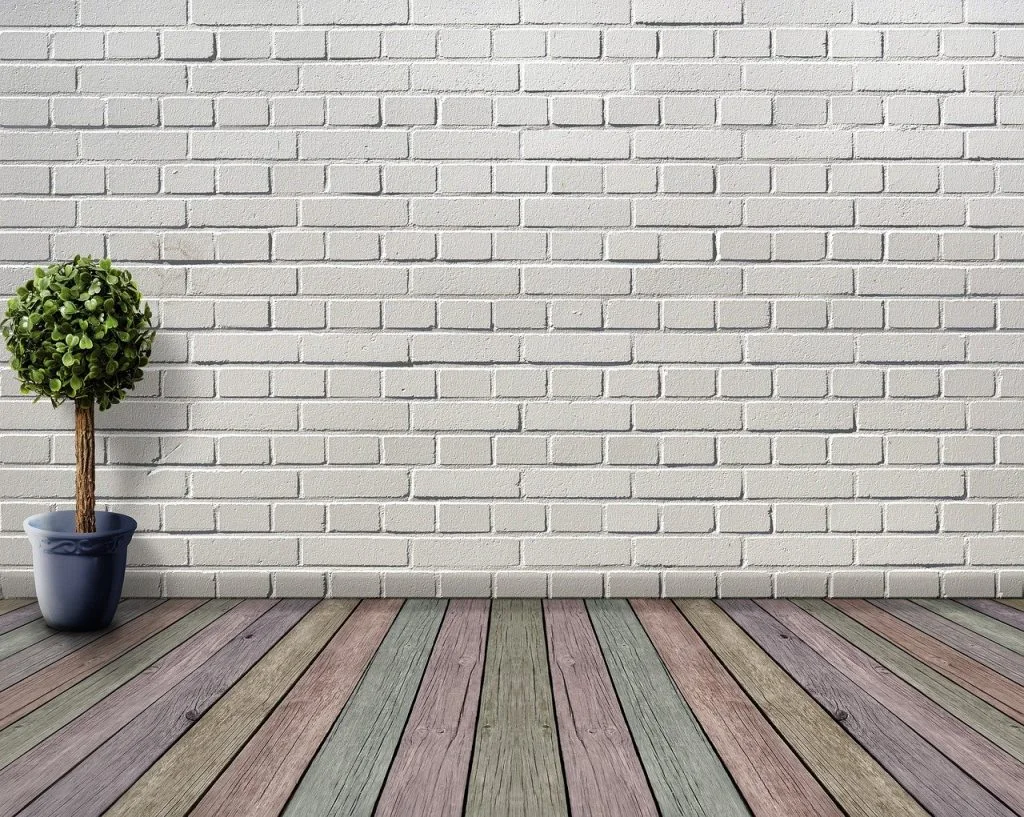When a material encounters sound, it can do three different things with that sound: reflect the sound, let the sound pass through it, or it can transfer the sound into heat. Sound absorption refers to the last of these.
Materials with higher sound absorption will turn a higher percentage of the sound energy that hits them into heat.
You scream into a pillow because the pillow makes your scream softer. It’s softer because the energy from your scream gets “absorbed” into the pillow. If you were to scream into a ceramic bowl, most of the energy from your yell would simply be reflected back at you.
So pillows absorb more sound than ceramic bowls.
What Makes a Material Absorb Sound?
High absorption materials seem to have two things in common. They are porous and they are dense.
High Absorption: in this context “High Absorption” means a material that turns most of the energy from noise into heat instead of reflecting it or allowing it to pass through.
If you think about it logically, you want a material that won’t reflect a lot of sound, and a material that won’t let much sound through.
A porous material will reflect less of the sound energy because it will let more of the energy pass through its pores. A metal jungle gym is porous, but it doesn’t absorb sound very well.

The pores are far too big. Sure the sound doesn’t get reflected, but most of the sound also just passes right through the jungle gym.
So the material must also be dense. This means the pores in the material must be very small. A dense material will not let much sound pass through it.

A brick wall is dense, so it doesn’t let much sound pass through it, but it reflects most of its sound because it is not porous. We need materials that are both dense and porous.
Materials like pillows, blankets, towels and foam all absorb a lot of sound because they are porous and somewhat dense. However, there is one more characteristic that can increase a material’s ability to absorb sound.
The role of thickness in sound absorption
Generally speaking, the thicker a material is, the more sound it will absorb. This makes logical sense as well. If you scream into a towel a lot of the sound will still pass through the towel. But if you fold the towel over a couple times, far less of the sound will make it out.
You can have a very absorbent material, but if that material is very thin, it will still have much of the sound pass through it.
So a material that absorbs a lot of sound should be porous, dense and also thick.
Keep these factors in mind as we continue learning about different materials.
Sound Absorption Coefficent: used to describe sound that gets reflected
In physics, we often assign a number to materials to compare and contrast their characteristics. The sound absorption coefficient (S.A.C) is one such number. Although it’s important that you understand that materials with high sound absorption coefficients may not always mean they are great at absorbing sound (converting sound energy to heat).
Why?
Because the S.A.C. is a measurement of how much sound is reflected by a material, not how much sound is turned into heat.
For example, an open window has a S.A.C. of 1 (meaning it reflects no sound).

So while a high S.A.C. can indicate that a material will turn a high percentage of sound into heat, it may also simply mean that the material lets most of the sound pass through.
Sound Transmission Class and Sound Reduction Index: used to describe sound that passes through
We also have numbers to describe how much a material prevents sound from traveling through. The Sound Transmission Class (S.T.C.) is used primarily in the U.S. while the Sound Reduction Index (S.R.I) is used everywhere else in the world.
These numbers are used primarily to describe building materials and they essentially measure how much sound can get through a wall.
They are found by measuring decibels both inside a room where a sound is created and outside the room. The more the decibel measurement drops outside the room, the higher the S.T.C. and S.R.I.
But remember, this measurement alone will not give you a good idea of how much sound will be absorbed by a given material.
For example, a concrete wall will have a high S.T.C./S.R.I. because it reflects most of the sound directed at it.
A Perfect Sound Absorber: high S.A.C. and high S.T.C./S.R.I.
The ideal material would have a high sound absorption coefficient (meaning it reflects very little sound) and a high sound reduction class/index (meaning it transmits very little sound).
If a material reflects little sound and allows little sound to pass through, that means that most of the energy from the sound is being absorbed into the material and turned into heat.
Sound Frequency (Pitch) and Absorption
Before we start looking at specific materials, there is still one more item to discuss: sound frequency. Materials do not absorb and reflect sound of different frequencies equally.
When you look at the Sound Absorption Coefficient of a material, it will change based on what sound frequency is being measured (it will also change based on the thickness of the material).
For example a material may reflect very little noise from a person speaking, but it may reflect most of the noise created by a bass drum.
In fact, lower frequencies (lower pitched sound like a bass drum) tends to be harder to absorb for most materials.
Noise Reduction Coefficient
Because the S.A.C. of a material changes based on the frequency of the sound being tested, there is another coefficient called the Noise Reduction Coefficient (N.R.C.) which takes the average of a material’s sound absorption coefficient across all frequencies.
The intent behind the N.R.C. is to summarize the absorption coefficients across all frequencies into a single number.
Be cautious, however, in your interpretation of this number.
Let’s say you come across a material that has a N.R.C. of 0.6. You may look at that number and think the material will absorb 60% of the sound.
This may be roughly true, but you may be looking at a material that absorbs 95% of high frequency sound, 65% of medium frequency sound and only 20% of low frequency sound. Depending on your intended use for the material, this may not work for you.
The Sound Absorption of Different Materials
OK, now that we have a basic understanding of how to measure sound absorption, let’s try to actually describe/measure the sound absorption of different materials.
Absorption coefficient of different materials
This table lists several common materials and shows their approximate sound absorption coefficient at different frequencies, then takes the average of these numbers to approximate their noise reduction coefficient.
Here are a few of the resources I used to compile this list:
| Material | Low Freq. S.A.C. | Mid Freq. S.A.C. | High Freq. S.A.C. | Average (N.R.C.) |
| Smooth Concrete | 0.01 | 0.02 | 0.05 | 0.03 |
| 5/8 inch drywall (painted) | 0.02 | 0.02 | 0.02 | 0.02 |
| 1/2 inch glass | 0.14 | 0.04 | 0.02 | 0.07 |
| Fiberglass insulation | 0.25 | 0.80 | 0.85 | 0.63 |
| Blue jean denim | 0.25 | 0.75 | 0.85 | 0.62 |
| Rock wool | 0.25 | 0.85 | 0.90 | 0.67 |
| Spray foam insulation | 0.20 | 0.60 | 0.90 | 0.57 |
| Brick | 0.03 | 0.04 | 0.06 | 0.04 |
| Carpet | 0.02 | 0.10 | 0.35 | 0.16 |
| Marble | 0.01 | 0.01 | 0.02 | 0.01 |
| Wood floor | 0.13 | 0.09 | 0.06 | 0.09 |
| Heavy Curtains | 0.25 | 0.55 | 0.75 | 0.52 |
| Fiberglass board (4 inch) | 0.99 | 0.99 | 0.99 | 0.99 |
| Water/Ice | 0.01 | 0.01 | 0.02 | 0.01 |
As we can see, most of the materials that reflect the least sound are those that are porous and dense. Things like curtains, denim, wool and various types of insulation all have high sound absorption coefficients. These materials are very similar to the pillow, blanket and towel that we mentioned earlier.
Also worth pointing out is that almost every material (except wood flooring) is better at preventing the reflection of higher frequencies than lower frequencies.
If you want some more context on how thickness can affect the absorption coefficients you should check out the two articles I linked above the table.
Transmission class of different materials
It turns out that finding a material’s sound transmission measurement is considerably more difficult that finding its absorption coefficient. I think it’s because these numbers are typically only used to describe materials used to construct and insulate walls. I tried to gather up as many materials as I could find.
In addition to a few google searches, these two pages are where I gathered my S.T.C. numbers:
| Material | Sound Transmission Class |
| Concrete | 45-55 |
| 5/8 inch drywall | 30-34 |
| 1/2 inch glass | 32-38 |
| Fiberglass insulation | 34-38 |
| Blue jean denim insulation | 44-46 |
| Rock wool insulation | 48-52 |
| Spray foam insulation | 48-52 |
| Brick (4 inches) | 44-48 |
| Brick (10 inches) | 50-60 |
These materials all seem to fall in a somewhat small range. For more context, the sound transmission class values seem to range from 0 to about 60, with 60 being a material that transmits the least sound.
Interestingly (to me at least), the type of material doesn’t seem to be nearly as important for noise transmission as it does for sound absorption. If you want further evidence of this, look through the two articles I linked above the table. If your sole purpose is to prevent sound from leaving a room, then the thickness of your material seems to matter more than the actual material you use.
Materials with high sound absorption and reduction (they turn most sound energy into heat)
Some materials will have a high sound absorption (meaning they reflect little sound) and a high noise reduction (meaning they allow little sound through), these are the materials which trap the most sound.
Based on what we’ve learned of various material’s sound reflection/transmission properties, I’m reading to draw some conclusions.
First of all, I think we can safely list out several materials which will be great for prevent sound reflection in a room:
- Curtains
- Towels
- Denim
- Insulation
- Fiberglass
Additionally, I think the best way to prevent transmission of sound through a wall is to ensure a thick layer of nearly any material (the five above included).
So the best materials for sound absorption are just thick layers of dense, porous materials like towels, cloth and denim.
Putting This Knowledge to Use
I would imagine you are reading this article because you want to achieve one of two things:
- You want to prevent noise from entering/leaving a room altogether (soundproofing)
- You want to improve the sound quality inside a room
These two goals require prioritization of different aspects of your materials. Let’s go ahead and talk about how we should go about achieving each one.
Sound Absorption in Soundproofing
If you’re attempting to soundproof a room you either have a lot of noise being created inside that room and need to prevent that sound from escaping or you need the room to be protected from outside noise. In both cases your primary objective should be to get materials with a high sound transmission class surrounding the room, and make the barrier as thick as possible.
If you’re building, then you can choose to use thick concrete or masonry walls to achieve this, but if the room has already been built, then your options will be more limited.
You’ll need to line the walls, floors and ceiling in order to achieve a reasonably soundproofed room. You can use a combination of materials.
For example you might put insulation board on the walls. Then you might use some plywood on the floors and cover it with a thick carpet. For the ceiling you might opt for a fiberglass insulation and put up a dense, porous ceiling tile.
Basically when it comes to sound proofing, thicker is better, because your primary goal is to prevent sound from transmitting through your walls, floors and ceiling.
Sound Absorption in Acoustics
In acoustics, the goal is not to absorb as much sound as possible. The goal is to reduce the amount of echo in a space to the point where amount of sound distortion is at a pleasing level. This video is an excellent demonstration in explaining the goal of using sound absorption in a room (either for personal comfort or for recording purposes).
Also, you aren’t necessarily trying to prevent sound from leaving the room, so the materials you use don’t need to minimize sound transmission. You can safely focus on a material’s sound absorption coefficient with no regard for its transmission class.
Usually, a room only needs a handful of sound absorbing panels to significantly improve the sound quality. Contrast this with soundproofing, which requires all surfaces of a room to be covered with sound absorbing/blocking material.
Conclusion
Sound absorption is a measure of how much a material reflects the sound that hits it. You should consider the sound absorption of different materials when sound treating a room, but you should also be thinking about sound transmission.
The most absorbent materials are those that are porous and dense like curtains, towels, denim, fiberglass and insulation. And remember that the more thickness you add to a material, the better it will be at blocking sound.
